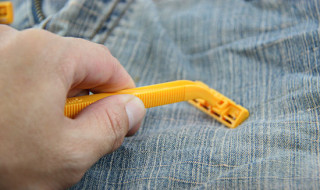First, you must know the nature of fixed deposits (FD), its advantages, and disadvantages. A fixed deposit is a financial tool offered by the bank, which, provides clients (like YOU) with a higher rate of interest than a savings account.
In Singapore, a minimum deposit of S$1, 000 is required to open an account. The fixed deposit rate will only be given within a maturity term. The term ranging from 1 to 36 months depends upon your bank here. Once the money matures, you will get back your initial deposit with the interest.
FD’S ADVANTAGES
a. SAFETY
Fixed deposit is a more stable and safe route than other investments. Since not everyone is willing to risk it all with bonds and property investments, fixed deposits offer guaranteed money back.
b. WORKABILITY
Because the rates vary based on the time on hold, the amount you put in, and the bank you chose…there is a good chance to get the highest interest rate possible. All you have to do is to research and compare the workability or flexibility of the FDs available.
c. LIQUIDITY
Your money that resides in a fixed deposit account is a surefire liquid asset (i.e., can be converted to cash). So, after the money matures, you can withdraw cash for any purpose such as weddings or medical emergencies.
FD’S DISADVANTAGES
a. NO DIVERSIFICATION
If you invest all of your wealth to FDs then, you will not indulge on the benefits of diversification. Diversification is having investments in real estate, gold, and stock markets.
b. VULNERABILITY TO INFLATION
The returns of the FDs are lower if the inflation is very high. To put it in perspective, the interest rate may not change but you will still lose money if the Singapore dollar significantly drops.
To the most exciting part, we shall go…
LEADING FIXED DEPOSIT RATES IN SINGAPORE
Here are the banks that provides the best interest rates if your savings is S$10, 000 within an annum:
1. RHB Singapore Dollar Time Deposit
Interest Rate: 0.63%
Returns: S$63
2. CIMB Why Wait Fixed Deposit-i Account
Interest Rate: 0.50%
Returns: S$50
3. UOB Grand Senior Citizens Fixed Deposit
Interest Rate: 0.38%
Returns: S$38
4. Standard Chartered Singapore Dollar Time Deposits
Interest Rate: 0.35%
Returns: S$35
Here are the banks that provides the best interest rates if your savings is S$100, 000 within an annum:
1. CIMB SGD Fixed Deposit
Interest Rate: 1.30%
Returns: S$1,300
2. Maybank iSaVvy Time Deposit
Interest Rate: 0.85%
Returns: S$850
3. Maybank Singapore Dollar Time Deposit
Interest Rate: 0.70%
Returns: S$700
4. Bank of China SGD Time Deposit Account
Interest Rate: 0.60%
Returns: S$600
The data above goes to show that the strength of the fixed deposit rate truly varies upon the amount you saved and the bank you chose. Hence, it is important to educate yourself first before diving in.













